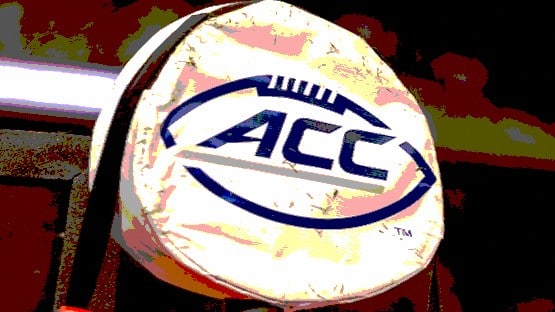
All that talk from Florida State about not being scared to fight the grant of rights in court, it was just that, just talk.
FSU isn’t going anywhere, not next year, anyway, and probably for the foreseeable future at this point.
And the story that we’d gotten from an insider about UVA and UNC being on the invite list for the Big Ten, that one didn’t pan out.
The ACC, meanwhile, very publicly explored adding Stanford, Cal and SMU; nothing has come of it, and doesn’t look like it will.
The Aug. 15 deadline for member schools wishing to leave the conference in the next academic sports year has now come and gone.
And the conference, you could say, is back to where it was a couple of months ago, except that, no, not really.
Why do I say that?
The grant of rights wins again
Lawyers up and down the Eastern Seaboard have been poring through the grant of media rights from member schools to the ACC.
Spelling out what the grant of media rights is: each school, back in 2016, when the ACC agreed to its 20-year TV deal with ESPN, signed over the rights to broadcasts of their home athletics contests to the conference, in effect, giving their right to make money off those home games to the group, in exchange for the security of the long-term deal.
Translated: if a school, like, say, Florida State, would want to leave the conference ahead of the end of that grant of media rights, which is, again, in 2036, that school has already forfeited its money from home-game broadcasts to the ACC, so, more power to them.
The value of those media rights is estimated, in the current TV environment, in the $40 million-a-year range.
That’s a lot of money to have to make up by leaving the ACC for another conference, which was the idea.
FSU leaders blustered publicly a couple of weeks ago about not being scared to challenge the grants in court as part of their spiel about being ready to bolt from the ACC.
And then we had, quietly, behind the scenes, under the table, quite clandestinely, heard that there was a similar sentiment from the leadership at UVA.
And maybe that line of thought still exists; but, funny thing, nobody is willing to test it in court.
The Magnificent Seven is dead
Leaders from seven schools – FSU, UVA, Virginia Tech, Clemson, Miami, UNC and NC State – met privately over the course of several months leading into the spring to discuss their options for addressing their revenues vis-à-vis what the Big Ten and SEC are able to pay out to member schools from their shiny new TV deals.
The Magnificent Seven, as the schools came to be known, were able to extract concessions from the other eight, including a new handshake agreement on revenue-sharing that would theoretically reward schools financially for on-field success.
That move sorta, kinda came at the point of a bayonet; in the form of, the nuclear option for the conference would be a vote of eight member schools to disband the ACC.
Were The Magnificents able to poach just one of the other eight, the ACC could be on its way to being the East Coast version of the Pac-12, er, 4.
Gotta wonder now if the other eight, seeing that FSU, and UVA and UNC, weren’t, in the end, willing to challenge the grant of rights on their own, and that The Magnificents couldn’t find one more dance partner, if that handshake deal on revenue sharing just up and goes away.
The SEC and Big Ten seem happy with where they are
SEC leaders seem more than happy with their 16, as they should be.
What’s interesting there is that the SEC, for all its dominance on the football field, the big moneymaker in college athletics, brings in less from its TV deal than the Big Ten does.
That’s a function of relative TV market size, and it’s not like adding any of the wannabe breakaway ACC schools is going to fix that for them.
For the Big Ten, then, the word we’d gotten a couple of weeks ago was that the Midwest-based conference, if it wasn’t able to get commitments from UVA and UNC, would seek out Stanford and Cal as its Nos. 19 and 20.
With the ACC flubbing on its reachout to the NoCal schools, it stands to reason that we could see B1G making some news there in the coming days to complete its expansion.
Once whatever else is going to shake out finally shakes out, there’s really nowhere else for any frustrated ACC schools to go.
Where does this leave the ACC?
For now, in third – a distant third – to the Big Ten and SEC money-wise, and competing for third in terms of prestige with the Big 12, which made some impressive, aggressive moves this summer, stealing away the Southwest corner schools from the Pac-12.
Those moves will give the Big 12 a leg up on the ACC by the time their next TV deal is ready to kick in.
By the turn of the next decade, ACC schools will be $50 million a year and more behind their peers in the Big Ten and SEC, and they’ll be probably in the area of $10 to $20 million a year behind the Big 12 schools.
Think of a toilet, slowly, very slowly, flushing, all the way through 2036.

 Share
Share






